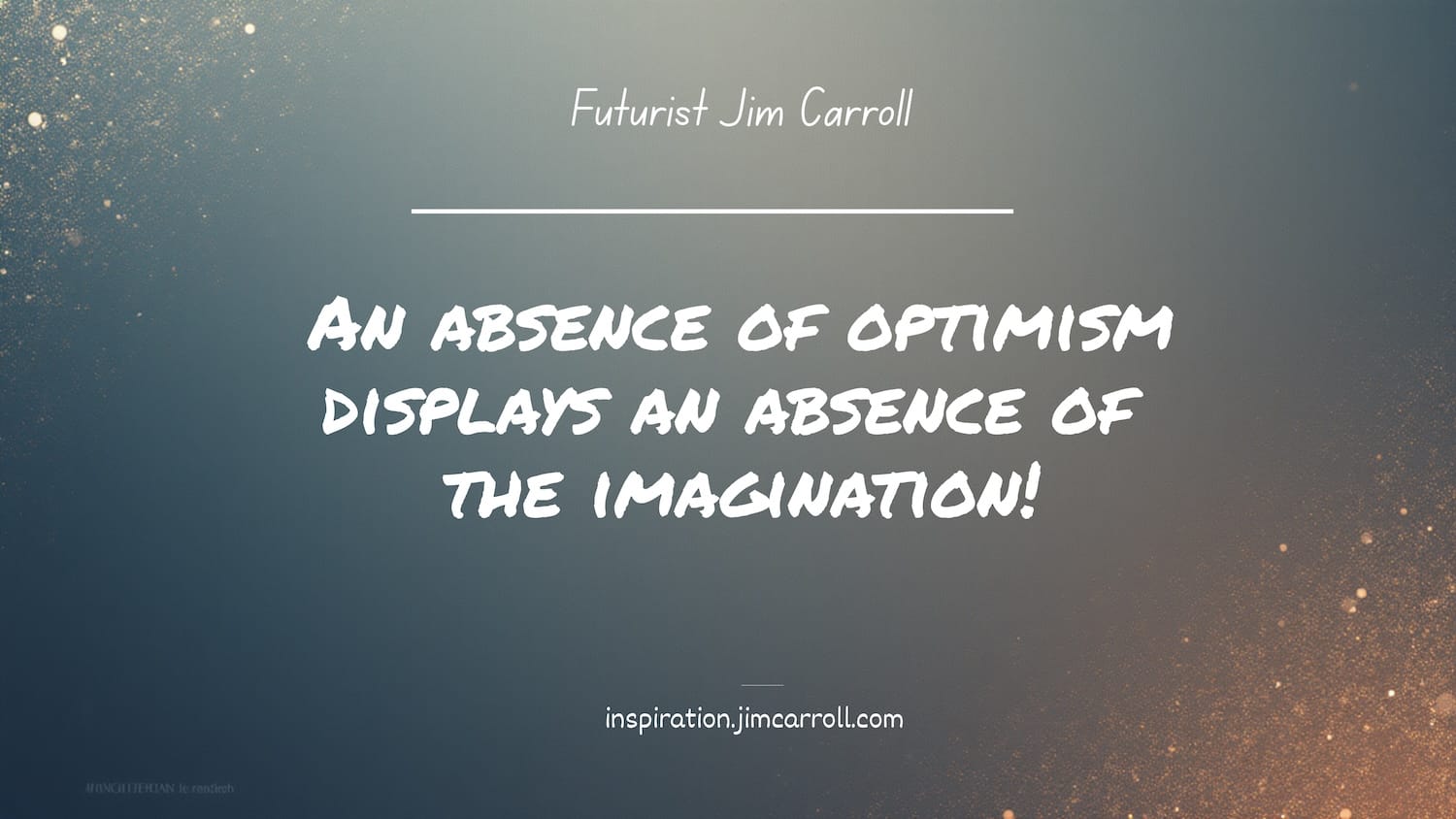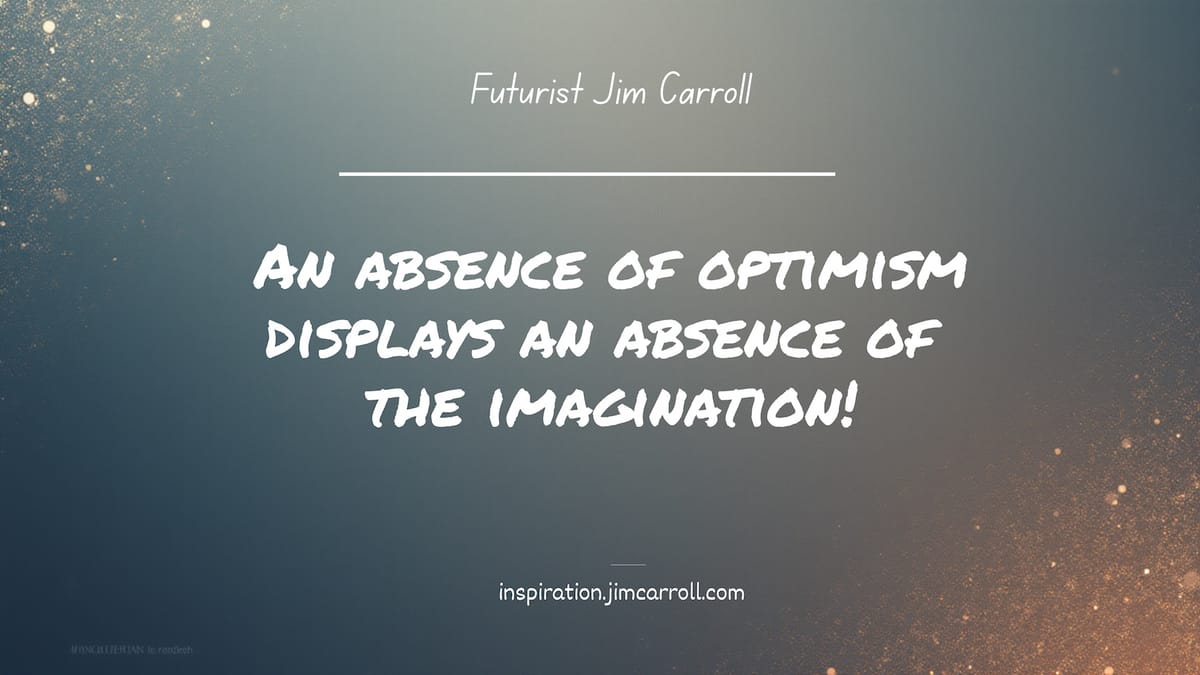"An absence of optimism displays an absence of the imagination!" - Futurist Jim Carroll

Somewhere along the way, this thought crossed my mind, and I put it into my folder of 'daily quotes.' (Yes, I have one.).
I can't remember the context, but I know it probably had to do with a client situation where someone on a conference call couldn't make the bold leap of the imagination with what I was talking about, related to a future trend. This happens often! I often find that, when it comes to trends and opportunity, far too many people focus on their current (negative) reality rather than on the potential of tomorrow's (positive) reality.
Maybe that's because many are hardwired to focus on the downside rather than the upside. That being the case, here's a simple list of 10 ways to let your imagination and optimism work hand-in-hand.
- Dare to dream.
- Imagine possibilities, then build them
- Visualize a great big idea, then work until it's real.
- Build a better future instead of mourning the last.
- Experiment on the edge where others fear to tread.
- Chase the crazy ideas that others can not yet imagine
- Know that an active imagination is what creates opportunities
- Regularly reinvent your reality by constantly challenging the limits.
- Always know that resilience comes from exercising the imagination.
In the context of this thinking, guess what!
It turns out we are engineered for pessimism rather than optimism.
It's called "The Science of Negativity Bias." Research shows that people tend to focus on their current negative reality over future positive potential. And the fact is, it's an evolutionary trait!
Three things stand out:
- Survival Instinct: Our ancestors, living in far less comfortable and far more risky circumstances, were far more focused on potential threats (predators, poisoned food, hostile tribes) than big ideas. And they were the ones who survived to pass on their genes. Genetically, our brains are wired to treat negative information (danger, loss, pain) as more urgent than positive information (safety, gain, pleasure). This is often called "better safe than sorry" in an evolutionary context.
- The Amygdala's Role: There's a place in our brain that is specifically engineered for negativity! The amygdala, aka the brain's alarm system, is specifically there for that role. Studies have shown that negative images, words, or experiences elicit stronger and faster responses in the brain than positive or neutral ones. This makes us more likely to remember negative events and overestimate the probability of bad outcomes.
- Loss aversion: Related to this is loss aversion, a concept from behavioural economics. People typically feel the pain of a loss (e.g., losing $100) about twice as much as they feel the pleasure of an equivalent gain (e.g., finding $100). This hardwiring makes the potential risk associated with a future opportunity feel much heavier than the potential reward.
What it means when I'm on stage is that many of those listening to my opportunities of the future are far more focused on the pain of their reality. So what does imagination have to do with this? Because when people are presented with big, bold ideas that often come true, they simply can't cope!
That's why we encourage exercising our imagination on purpose. Our imagination is the cognitive tool built into our brain that is required to override our hardwired pessimism and access optimism!
Think about it: while our evolutionary negativity bias compels us to focus on threats (our survival instinct), overreact to risks (Amygdala's role), and fear loss (loss aversion), our imagination can provide the necessary counter-force. It allows us to think about a better future in a way that the emotional value of the potential gain outweighs the fear of the potential loss.
What happens if you can't exercise your imagination? You will inevitably default to the safer, but stagnant, state of pessimism!\ Always remember that, in this context, optimism requires a conscious act of imagination to override the default, fear-based programming we are born with. It is the imaginative act of constructing a future reality where the potential rewards outweigh the perceived risks, allowing us to take the necessary action.
So exercise your imagination today - put it to work!
Futurist Jim Carroll tries to exercise his imagination every day.

